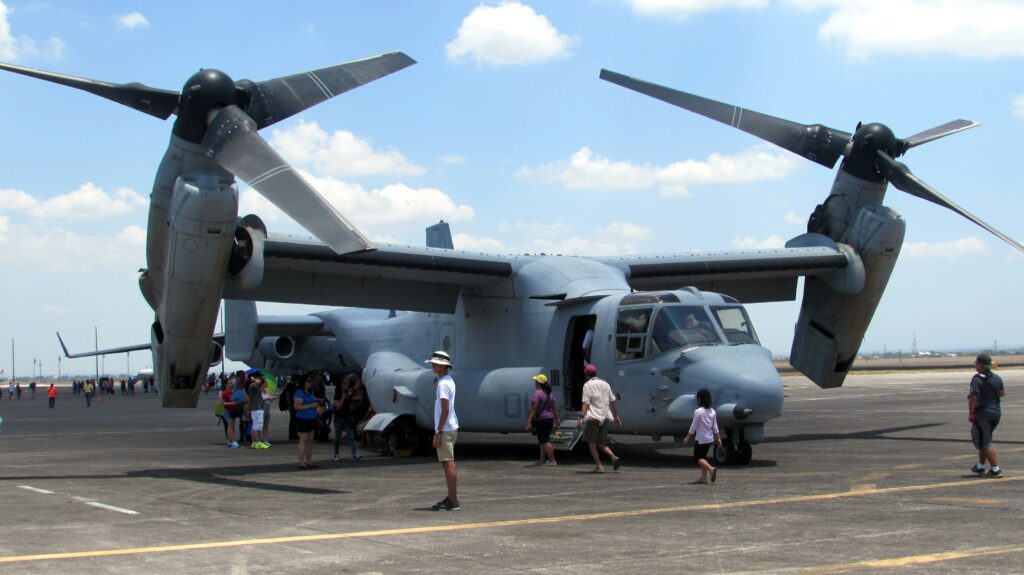
The Bell Boeing V-22 Osprey has been called “the most controversial US military aircraft in history,” and it has had its share of detractors and negative media coverage over its three-plus decades of development and use.
A high-profile Air Force Osprey crash off the coast of Japan on November 29, 2023 killed 8 US airmen and has shed renewed light on the potential safety issues with the aircraft. In fact, 20 US service members have died in 4 Osprey crashes since March 2022 (see below for full details), and the US military grounded its fleet of Ospreys twice as the result of investigations into the incidents.
However, if you actually look at the numbers, the Osprey doesn’t come off too bad. With new V-22s still being built, and the DoD planning to extend the Osprey’s lifespan into the mid-21st century, it’s clear that the versatile tilt-rotor medium-lift helicopter/airplane hybrid transport aircraft has something to offer, if it’s determined that the fleet is healthy enough to continue service. Let’s have a look at this ugly duckling, er… Osprey and see if we can determine where all the badmouthing comes from, and whether it’s well-deserved.
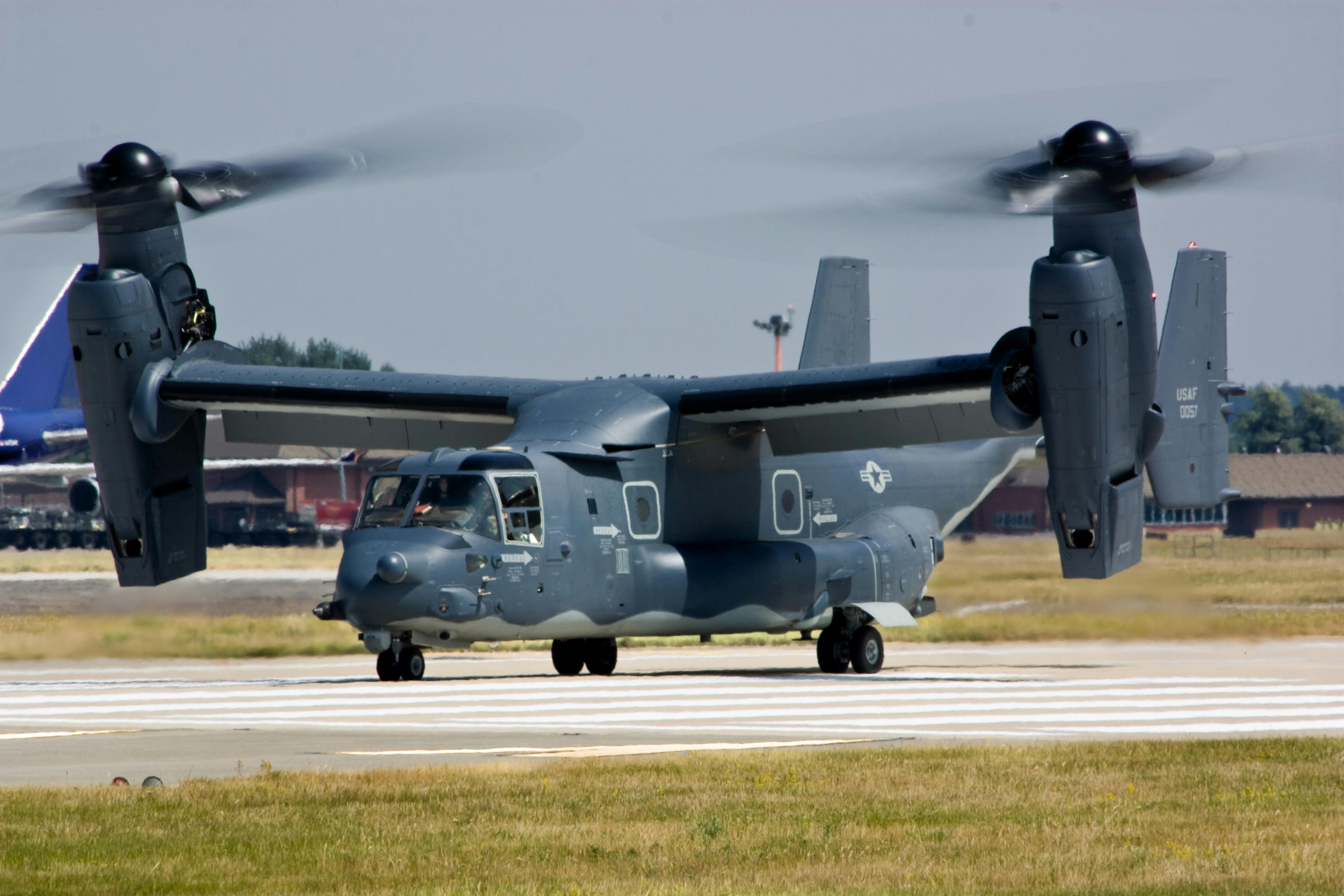
Why and when was the V-22 Osprey developed?
Several sources cite the failed Operation Eagle Claw during the Iran hostage crisis of 1979-1980 as the primary reason for the US military’s request for and development of this funky new type of aircraft. The operation was intended to rescue the 52 US embassy staff that had been captured and held captive for over a year in Tehran by Islamist Iranians, and the failure of Eagle Claw was a primary reason President Carter gave for his loss in the 1980 presidential election. There were multiple mission failures in planning and execution, but a key factor was that, in preparation for an assault and rescue attempt, eight Navy RH-53D Sea Stallion helicopters were sent to the first staging area called Desert One, but only five arrived in operational condition. One had experienced hydraulic problems, another was caught and damaged in a sandstorm, and the third showed signs of a cracked rotor blade. During the operational planning for the mission, it had been determined that the mission would be aborted if fewer than 6 helicopters remained operational when they linked up with C-130s and troops at the rendezvous location, despite only four helicopters being absolutely necessary to complete the mission. In a move that is still debated in military circles, Carter’s field commanders advised the president to abort the mission, which he did.
To add insult to injury (or more accurately, to add injury to insult), as the US forces (including Delta Force in one of its first appearances) prepared to withdraw from Desert One, one of the remaining Sea Stallion helicopters crashed into a C-130 transport aircraft containing servicemen and jet fuel, resulting in a fire that destroyed both aircraft, killing 5 Airmen and 3 Marines.
As a result of this highly visible, tragic situation, the US military was convinced of the need for a new type of aircraft that could not only take off and land vertically but carry troops and gear at higher speeds and with greater range, and with potentially higher resistance to weather, dust storms, and other environmental factors, than current technologies allowed.
GlobalSecurity.org reports, “As a result of the cancellation of the replacement assault transport helicopter (HXM) program, the Deputy Secretary of Defense directed in December 1981 that a review of vertical/short takeoff and landing (V/STOL) technology be accomplished by the services, with the intent of establishing a joint rotary wing aircraft development program to satisfy service lift requirements for medium lift V/STOL aircraft in the 1990’s and beyond. The directive indicated a need to consolidate limited development funds in the production of a single aircraft to meet the various service needs. It called upon the Services to take advantage of advanced, but mature, tilt-rotor technology which promised increased range, speed and reliability / maintainability. As a result of the favorable comments returned by the Services, the Deputy Secretary of Defense directed the Army, Navy and Air Force to contribute an initial ~$4.5 million to jointly develop an advanced multi-purpose vertical lift aircraft.”
The request for proposals was sent in December 1982. Multiple aircraft and aerospace companies were queried, and all were encouraged by the DoD to collaborate to save funds and speed development. The Bell/Boeing team—the only one to submit a proposal—was awarded a preliminary design contract in April 1983 to continue development of the (eventual) V-22 Osprey, which was an upsized design based on the Bell XV-15 experimental tiltrotor aircraft developed with the assistance of NASA. The intent was for the new aircraft to satisfy the needs of all four fighting branches of the US military.
By March 1985, the first six Osprey prototypes were being produced, and in May 1986, the Navy awarded Bell Boeing a $1.714 billion contract for the V-22, with all 4 military branches planning for acquisition at the time, though the Army later dropped out. Work was split evenly between Bell and Boeing, despite their different locations (Boeing Vertol in Philadelphia and Bell Helicopter in Fort Worth). Bell manufactured and integrated the wings, engine nacelles, propellers/rotors, drive system, tail surfaces, and aft loading ramp, as well as integrating the Rolls-Royce turboprop engines and performing final assembly. Boeing Vertol manufactured and integrated the fuselage, cockpit, avionics, and flight controls. This kind of cooperation between aerospace companies continues to this day. (See the United Launch Alliance for a good example.)
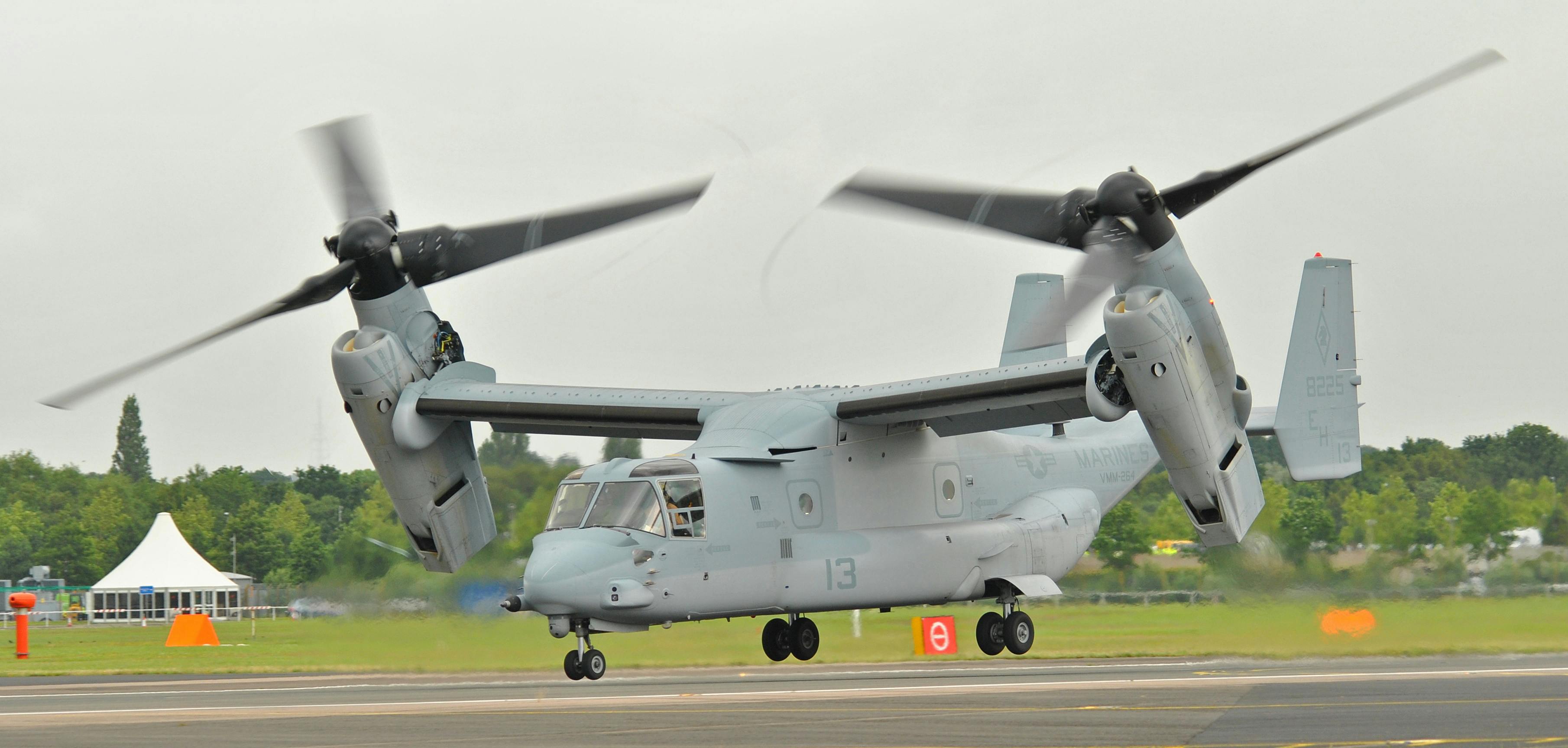
The V-22 Osprey was controversial almost from day one
The first V-22 was rolled out to the public in May 1988, but changing priorities that year led the US Army to pull out of the program. Skyrocketing development costs—the development budget was first set at $2.5 billion in 1986 but ballooned to a projected $30 billion in 1988—led SecDef Dick Cheney (yep, that Dick Cheney) to try to defund the Osprey program multiple times from 1989 to 1992, but he was overruled by Congressional vote. The DoD instructed the Navy not to spend any more money on the program, but Congress provided unrequested program funding (how often does that happen?), and after studies showed that the V-22 provided more operational effectiveness and expanded capabilities with similar operating costs compared to current options, the Clinton administration later supported the program and helped it gain still more funding.
Two of the prototype aircraft crashed in 1991 (several injuries) and 1992 (7 fatalities), and flights were stopped while the V-22 was redesigned to reduce empty weight, simplify manufacture, improve safety, and reduce build costs. The resulting V-22B resumed testing in June 1993. Bell Boeing received a contract for the engineering manufacturing development (EMD) phase in June 1994, and all prototypes were modified up to the V-22B configuration.
Due to the end of the cold war and changing military and public perception in the 1990s, the V-22 faced a perpetual sword of Damocles, which threatened more intensely as testing fell behind schedule. The first low-level-production Osprey wasn’t delivered until May 1999.
Unfortunately in 2000 there were two high-profile V-22 crashes in April (19 fatalities) and December (4 fatalities), both of which grounded the platform while investigations were performed.
By now, we were approaching nearly 20 years of funding and development of the V-22, and it still hadn’t entered general operational service. But the hits just keep on comin’: In 2001, Lieutenant Colonel Odin Lieberman, commander of the V-22 squadron at Marine Corps Air Station New River, was relieved of duty after allegations that he instructed his unit to falsify maintenance records to make the Osprey appear more reliable. Dude… seriously? Three of his officers were also implicated for their roles in the records-falsification scandal. Not a good way to win the public’s hearts and minds.
After 9/11, the US Congress and the public’s perspective and prioritization of military spending changed in a big way, and by June 2005, the V-22 had completed its final operational evaluations, including long-range deployments, high-altitude flight, desert and shipboard operations, and had undergone multiple improvements. All problems previously identified were reportedly resolved, and the Osprey was deemed ready for service by the US Marine Corps, receiving its first combat deployment to Iraq in April 2007.
But the Osprey’s troubles were far from over. In October 2007, Mark Thompson wrote an article for Time magazine entitled, “V-22 Osprey: A Flying Shame,” in which the author condemned the V-22 as unsafe, overpriced, and inadequate for its intended purposes. Multiple news organizations piled on and published similar reports, possibly in an effort to increase their ratings (no news agency would ever do that, right?). The USMC’s Marine Corps Times responded in December 2007 that the Time article’s data was at least partly obsolete and the report was inaccurate, further pointing out that the report held unrealistically high expectations for any new type of aircraft.
Critics continued through the years to point out that the Osprey is expensive to maintain, and operational readiness is historically lower than traditional helicopters. For example, the USMC’s required Osprey fleet readiness/mission capable rate was set at 82%, but the average was 53% from June 2007 to May 2010. (It has improved dramatically since.)
Another issue is the weight of the Osprey requires powerful engines and large rotors, which produce high-velocity, intense rotor wash which causes multiple issues compared to a traditional helicopter. Dust and debris can be a real issue, and due to the intense rotor wash, troops must deploy using fast roping from higher altitudes than with helicopters, which can increase the potential for injury or death in a fall. Furthermore, this high-temperature, high-heat jet wash of the V-22’s turboprops when angled downward for V/STOL takeoffs and landings tears up carrier decks and airbase tarmac, which increases maintenance and repair costs for ships and ground crews.
Acquisition and maintenance costs are considered high, and as has been noted above, the Osprey program has had a lot of issues sticking to a budget throughout the lifetime of the project.
Others point out that the Osprey is so wide that it potentially restricts operational usage because of its twin rotor nacelles on the end of its wings. The craft is 57 feet long (shorter than a Black Hawk’s 65 feet) and 22 feet high with its engines rotated vertically, but it’s a not-insignificant 84 feet wide measured from the outside edges of its propellers, while a Black Hawk’s rotor disc measures just over 53 feet. Proponents have argued that since the Osprey carries more passengers (a crew of 4 plus 24 troops, double that of the Black Hawk) it effectively can get more done with fewer craft, but the fact is that the helicopter can objectively land in narrower spaces.
The back-and-forth sniping from public and military media still continues, particularly when there’s a report of a mechanical issue, like the recent clutch problem highlighted by the Air Force, or the 4 fatal osprey crashes in training exercises over the past 2 years (see below for more details). One of the main reasons is because the Osprey has developed an unofficial reputation as a “dangerous” aircraft, for several potential reasons, which we’ll go into below. But first, let’s look at how groundbreaking the V-22 actually is.
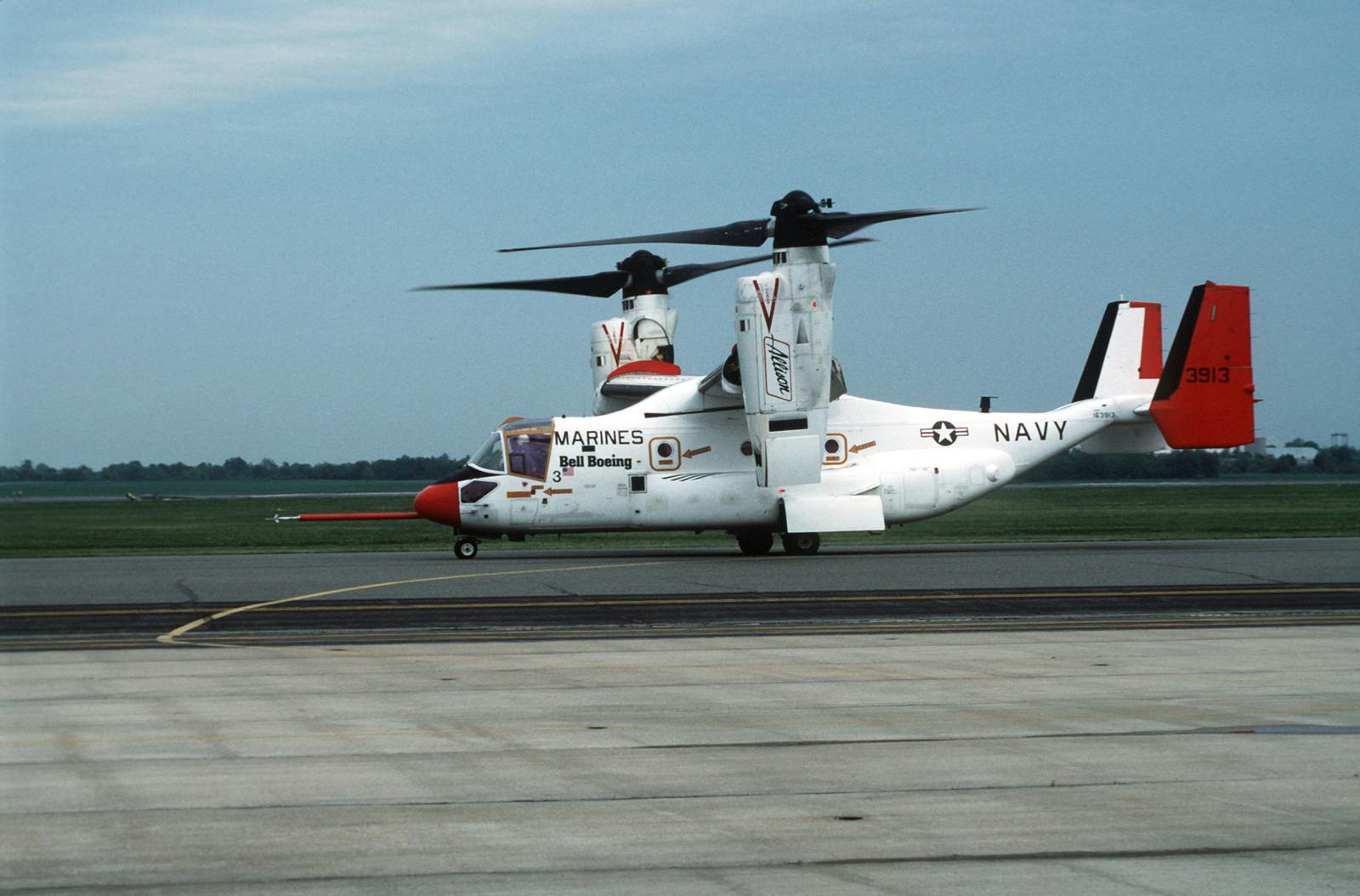
The V-22 Osprey: A history of firsts
The V-22 Osprey is the first successful tiltrotor aircraft to combine the vertical takeoff and landing advantages of a helicopter with the speed and range of a conventional airplane. This fulfills the tactical need for vertical takeoff and landing, but also provides the speed of an airplane and the ability to carry a lot of gear and passengers. This concept is so attractive that the Army is spending big bucks developing the Osprey’s eventual successor in the FLRAA program with the Bell V-280.
Additionally, the V-22 was the first aircraft in history designed from the ground up to meet the needs of all 4 of America’s fighting military branches. Though the Army’s variant eventually failed to come to fruition, the Marines, Navy, and Air Force all still use the Osprey platform (the Air Force is planning to retire their fleet soon).
The V-22 was also the first aircraft development project whose design was completed entirely on computers, using digital design software, saving time and money.
Still not impressed? The V-22 was also the first major military aircraft whose airframe was made up almost entirely of advanced composite materials. Even the prop rotor blades are composite.
The Marines’ variant, the MV-22, can carry 24 Marines twice as fast and 5 times farther than previous options. The effective operational combat range that the Osprey can cover is extremely impressive compared with the CH-46E Sea Knight helicopter.
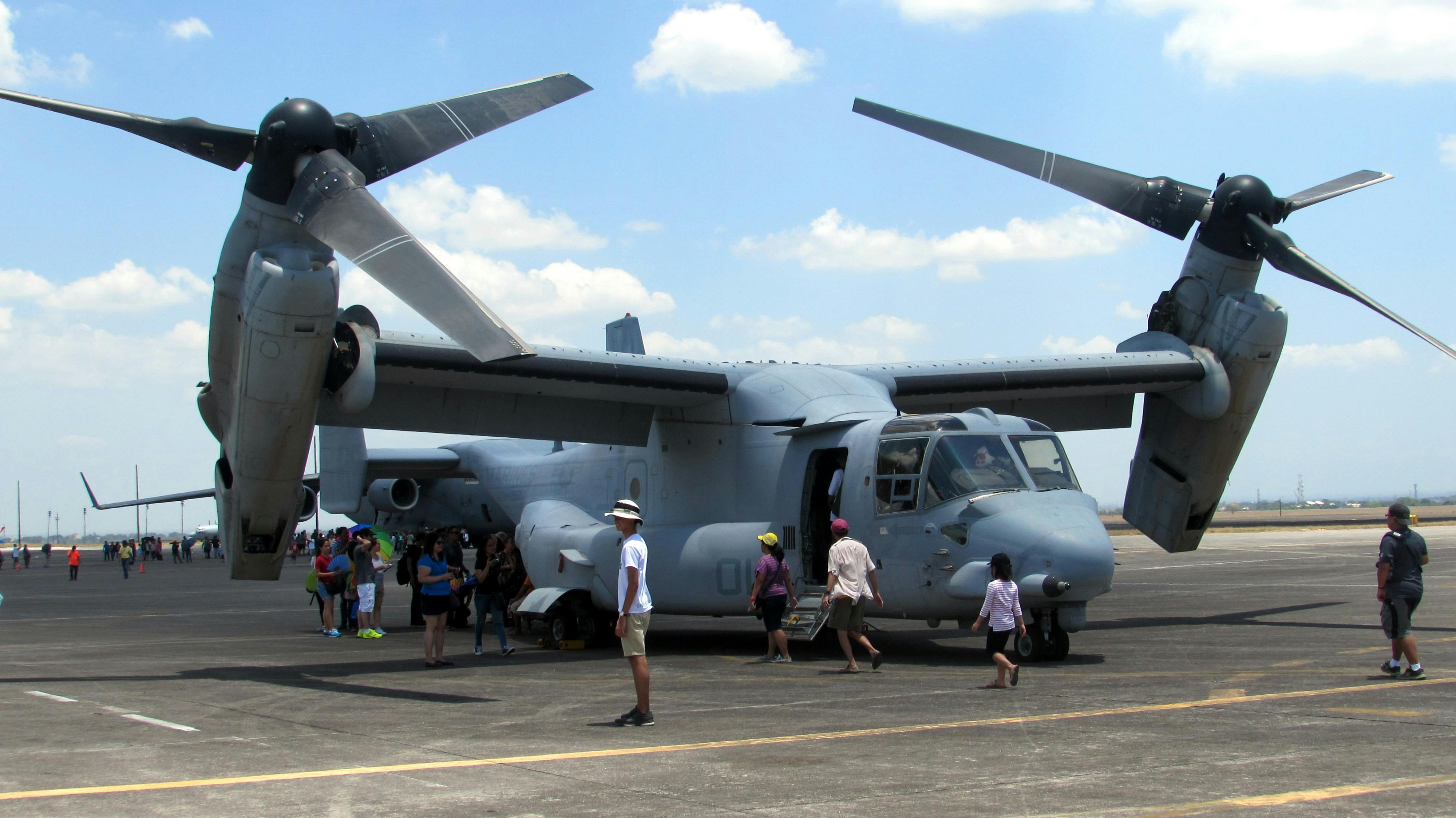
Is the V-22 the deadliest military aircraft to operate? (Including recent crashes)
Over the 33-year history of the V-22, the Osprey has experienced at least 16 “hull loss” (unrepairable) accidents that have resulted in a total of 63 fatalities, according to the data we found: During testing from 1991 to 2006, there were 4 crashes resulting in 30 fatalities. Since becoming operational in 2007, the V-22 has suffered 12 crashes, including two in combat zones, and several other accidents and incidents that resulted in a total of 33 fatalities, based on the information we can find. Crucially, as far as we can tell, none of these crashes were the direct result of enemy fire. This record of fatal crashes certainly doesn’t sound good, and the deaths of any service members are indeed tragic. Of particular concern is the apparent acceleration of deadly incidents over the recent couple of years, with 4 fatal Osprey crashes occurring since March 2022 alone.
But the Osprey is statistically among the safer military aircraft if you look at the numbers. While 16 crashes and 63 fatalities in 33 years might sound like a lot, crashes are an unfortunate fact of life in military aviation, particularly when you have to fly low, fast, and often in the dark. For example, the excellent F-15 Eagle has experienced around 125 aircraft losses in mishaps, though none in air-to-air combat.
If you look at the death rate per 100,000 flight hours, the Osprey is not even close to the “most lethal” to fly. Alex Hollings of Sandboxx media points out that the UH-60 Black Hawk helicopter has resulted in far more deaths (more than 180 military and civilian deaths in non-combat-related crashes in its first 33 years of service), and is still considered “the safest helicopter the US military has ever flown.”
Hollings references General Jorge Martinez, who says the V-22 has a lower crash death rate per 100,000 flight hours than the Harrier, the F/A-18 Super Hornet, the F-35B, or the Sikorsky CH-53E Super Stallion.
It also depends on how you look at the numbers. For example, the Osprey can carry up to 32 people at once, so theoretically an F/A-18 Super Hornet carrying 2 people could have a fatal crash incident rate of 8 or 10 times that of the Osprey, but the V-22 would still show a higher death rate from fewer crashes.
And the media certainly has an influence on the public’s perception. When up to 2 dozen servicemen and servicewomen can potentially die in a single training accident while aboard an Osprey, it somehow feels a lot more tragic than 2 dozen pilots dying in single-seat jet fighter training aircraft crashes over a period of several years. It gets people’s attention and “sells papers,” to use the archaic term. Certainly in an ideal world, nobody would ever die in a military aircraft accident, but we haven’t figured out how to achieve that goal yet. And many media outlets continue to “never let a crisis go to waste,” based on all the facts.
However, the most recent fatal Osprey crash off the coast of Japan on November 29 has received significant attention, partially because it occurred in daylight, at around 2:40 in the afternoon, according to Japanese officials. Eight US Air Force airmen lost their lives. The accident, which remains under investigation, is the deadliest Air Force mishap since 2018, and the fourth fatal Osprey crash in two years.
A Marine Corps investigation of the 2022 California Osprey crash that killed 5 marines determined that the aircraft suffered an “unanticipated, unrecoverable, and catastrophic mechanical failure,” but at the time the pentagon determined that there was insufficient evidence to warrant grounding the entire Osprey fleet. It was later determined that a dual hard-clutch engagement caused catastrophic malfunction of the aircraft’s gearbox, resulting in a drive failure.
In August 2022 a Marine Corps Osprey crashed in Australia, killing 3. NBC news reports that the Air Force SOCOM grounded all of its 52 Ospreys for 2 weeks in August 2022 for more than 2 weeks after clutches repeatedly malfunctioned, but it hasn’t yet been determined if a clutch problem was the cause of the August crash.
These crashes came just months after an Osprey crash in Norway killed 4 troops in March 2022. However, it’s important to note that in this case, a mechanical failure was not determined to be the cause of the accident. Investigators determined that the crash was caused by pilot error due to engaging in low-altitude, steep-bank-angle maneuvers which exceeded the aircraft’s normal operating envelope. Investigators also noted that an unauthorized, personal GoPro video camera was found at the crash site and was in use at the time of the crash. The report states that “Such devices are prohibited on grounds that they can incentivize risk-taking and serve as a distraction; that may have been the case with Ghost 31.”
Overall, despite its recent high-profile troubles, the V-22 Osprey has proven to be a game-changer and expands the operational range of military units exponentially. How and when replacements or improvements like the V-280 will come into play remains to be seen, but for now, it looks like the Osprey has a long—and hopefully healthy—life still ahead of it.
–By Jeff Davis, Intergalactic Scribe
Sources:
https://www.airforcetimes.com/news/your-air-force/2023/12/12/family-friends-mourn-8-airmen-killed-in-osprey-crash-in-japan/
https://www.aerotime.aero/articles/31919-pilot-error-mv-22-osprey-crash-norway
https://www.globalsecurity.org/military/systems/aircraft/jvx.htm
https://en.wikipedia.org/wiki/Bell_Boeing_V-22_Osprey
https://en.wikipedia.org/wiki/Accidents_and_incidents_involving_the_V-22_Osprey